Professional Data Cloning & Hydraulic Control
Dual-clutch transmissions (DSG) deliver outstanding efficiency with crisp, direct shifts. But when the mechatronics unit—the hydraulic + electronic control module at the heart of DSG—fails, the result can be severe: no drive, erratic gear selection, or complete loss of shifting.
On many Volkswagen and Audi models from the late 2000s onward, age-related wear, solenoid trouble, or data corruption inside this unit has become increasingly common. Accurate diagnostics and the right repair approach are essential.
In this article, using case work from the transmission specialist TOY’s (Numazu, Shizuoka), we explain how mechatronics repairs and data migration (cloning) actually work, how procedures differ between dry and wet DSGs, and how related services like OEM immobilizer registration and key programming fit into the workflow.
If you’re new to DSG, you may want this primer first:
👉 DSG Basics — Dry vs Wet, Jitter (Judder) Countermeasures, Fluid Changes, and Mechatronics Repair Overview
DSG Mechatronics: What It Is
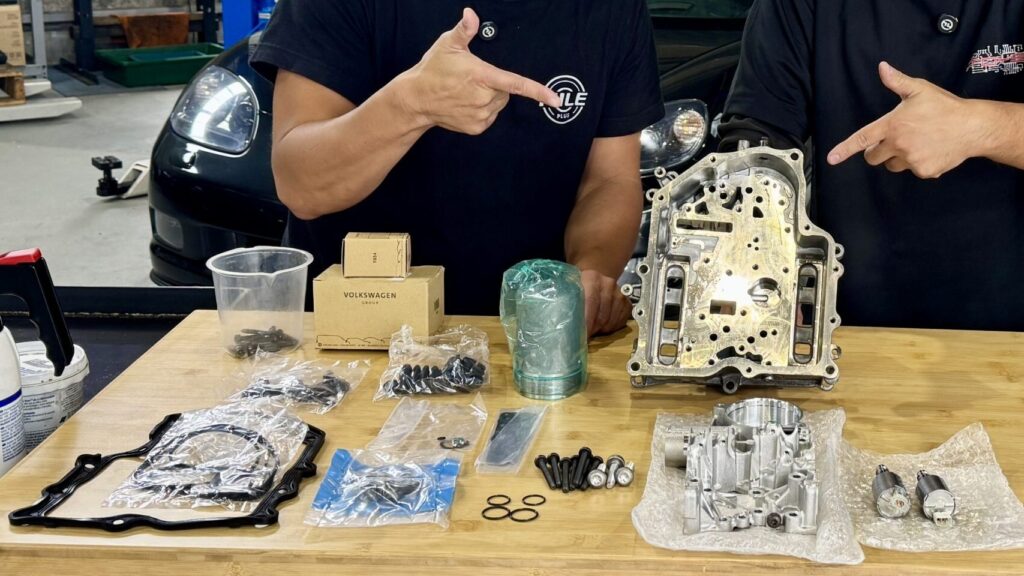
The “brain and heart” between engine and gearbox
Volkswagen and Audi’s DSG (dual-clutch transmission) combines high efficiency with a sporty, direct feel. Its core is the Mechatronics Unit, a compact module integrating:
- Hydraulic control block (valve body): Solenoids modulate oil pressure to command clutches and shift forks.
- Electronic control board (TCU/ECU): Talks to the engine ECU and calculates shift timing based on speed, load, and torque.
- Sensors & actuators: Monitor pressure, temperature, and speed, and apply real-time corrections.
Physically, the mechatronics sits on the transmission, immersed in transmission fluid.
Typical symptoms of failure
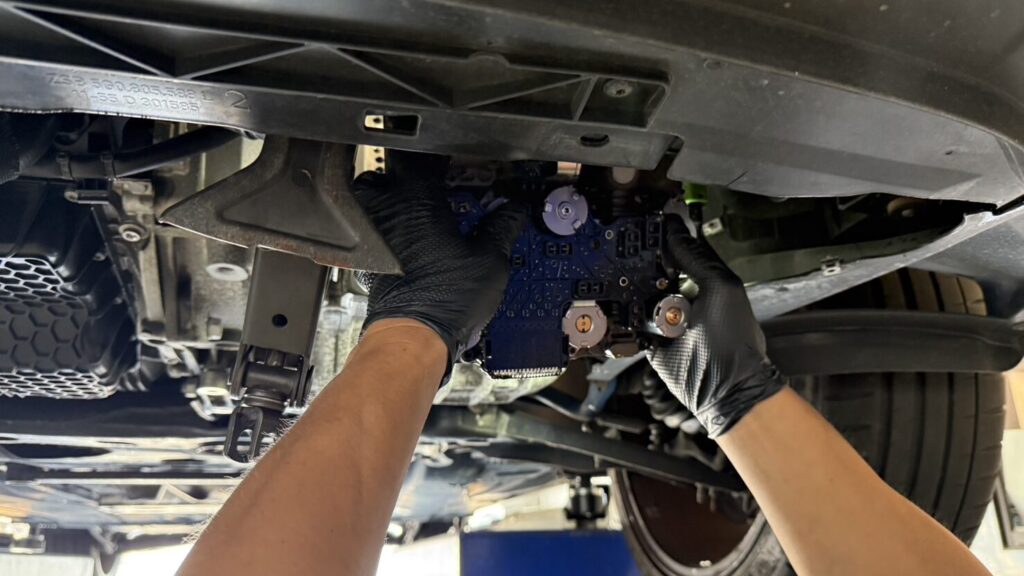
Many drivers assume “worn clutch,” yet the root cause is often stuck solenoids, internal leaks, or communication faults inside the mechatronics.
Related reads:
- “Car won’t move in D? Dry 7-speed DSG faults & correct parking/stop procedure”
- “Dry 7-speed DSG clutches & judder: generations, replacement, longevity tips”
- “Judder isn’t only the clutch? Why ignition service can smooth the DSG”
- “DSG mechatronics oil leaks: gaskets & O-rings on the dry 7-speed”
Why Failures Happen
The unit fuses electronics and hydraulics in a tight package, so small defects can cascade.
Bottom line: distinguishing electronic vs hydraulic vs mechanical origin is key. Proper diagnosis requires a scan tool and pressure test equipment.
Repair & Data Migration Workflow
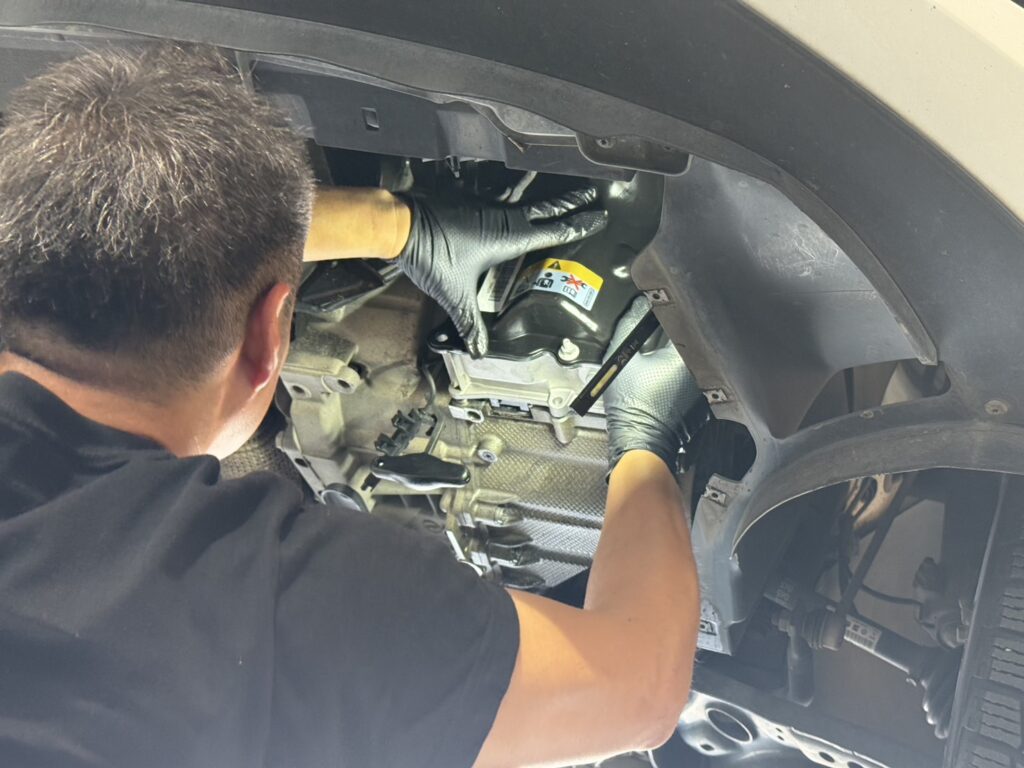
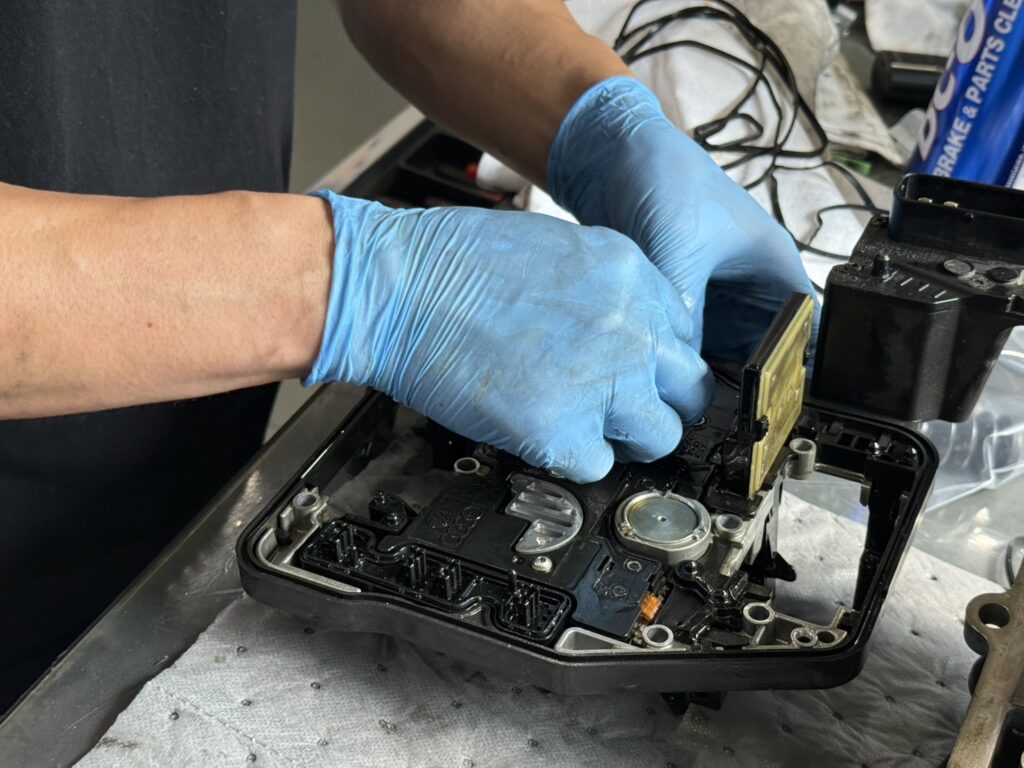
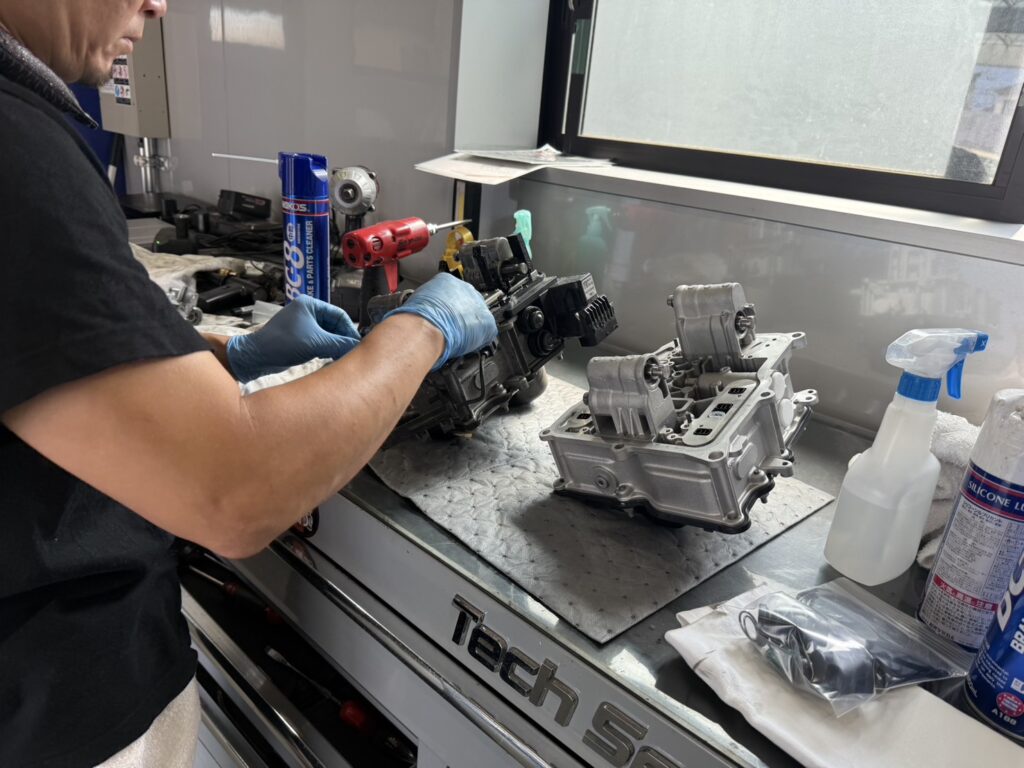

Think “re-engineering,” not just “parts swapping”
DSG mechatronics repair is a system job that spans electronics, hydraulics, and data. Here’s the typical flow:
1) Read data from the failed unit
Extract VIN, gear ratio maps, learned clutch positions (K1/K2), and other calibration from the EEPROM with a dedicated interface. Stable power and ESD precautions are mandatory.
2) Write (clone) data into the replacement unit
Program the new or rebuilt mechatronics with the original vehicle’s data so the ECU and immobilizer recognize it as the same car. On MQB models (Golf 7→) the mechatronics includes an immobilizer-linked chip; without proper adaptation the engine will not start. OEM online authorization or an approved specialist tool is required.
3) Install, initialize, and validate
After installation: bleed the hydraulic circuit, command solenoids, reset adaptations, and relearn clutch kiss points. Incorrect learning leaves residual judder or harshness.
4) Road test & fine check
Verify shift pressure, timing, and drivability; confirm no faults on a scan.
Goal: not just “it moves,” but it shifts like it should—restoring precision and feel by aligning data integrity + hydraulic stability + electronic health.
Service Notes by DSG Type

Dry 7-speed (DQ200)
- Lightweight, efficient, electric pump for on-demand pressure.
- Sensitive to heat and pressure management.
- Common: PCB faults, solenoid issues, pump/relay failures.
- Data cloning (VIN, K-values, learned data) is mandatory; adaptation & bleed are critical.
Wet types (DQ250 / DL501)
- Oil-cooled clutches for higher torque capacity; robust but more complex and heavier.
- Precision matters: shim/plate stack tolerances directly affect launch smoothness.
- Always assess DSG fluid condition; use the correct spec or risk solenoid malfunction.
- Widely used across Audi and Porsche (e.g., Macan) → OEM test tools & online registration needed.
Takeaway: “DSG repair” isn’t one procedure—method and tools depend on the type.
TOY’s: Equipment & Strengths
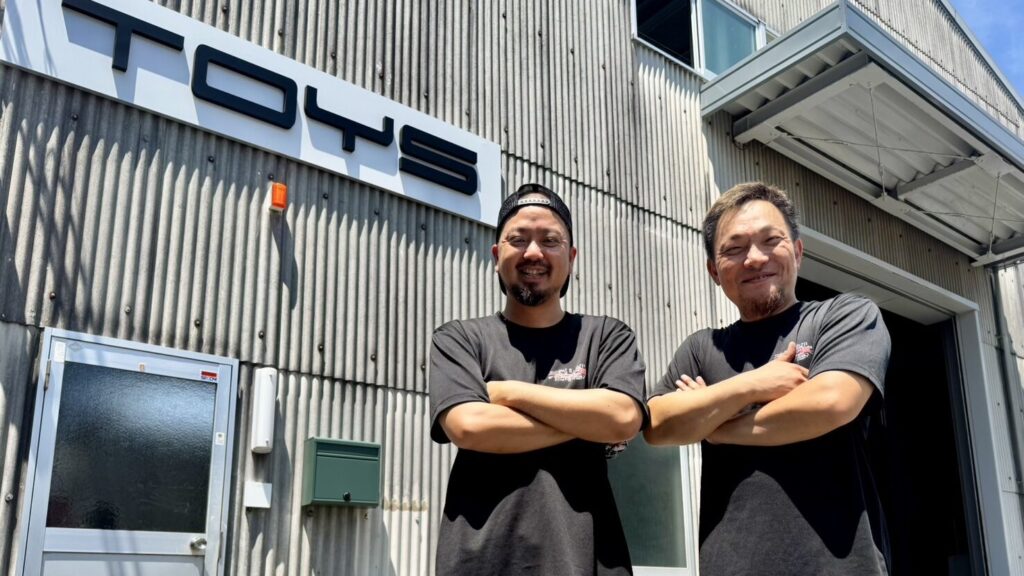
From “can disassemble” to “can reproduce”
TOY’s (Numazu, Shizuoka) is one of Japan’s few workshops specializing in DSG rebuilds. In partnership with NILE PLUS and a nationwide network, they receive mechatronics jobs from across the country.
- Dedicated jigs & torque/angle tools: For solenoid positioning, accumulator fastening, and spec-accurate reassembly.
- Hydraulic + electronic validation: Pressure testers and measurement gear confirm post-repair characteristics against target values.
- Data infrastructure: In-house capability for EEPROM reads/writes, immobilizer sync, and OEM online procedures reduces turnaround and avoids “no start / no comms” traps.
- Parts logistics: Direct channels for genuine/updated solenoids and gaskets keep quality high and lead times short.
- Breadth: Beyond VW/Audi, experience extends to Skoda/SEAT and Porsche Macan S-tronic/DSG variants.
Result: not a “swap,” but a return to design intent.
Additional Services at TOY’s
- General maintenance & inspections: From oil changes to full inspections on VW/Audi, Mercedes-Benz, BMW, and heavy SUVs (e.g., G-Class).
- DSG fluid & filter service: Temperature-controlled fills aligned with post-repair break-in.
- Chassis work: Suspensions, bushes, and alignment—important because DSG torque pulses reveal weak chassis components.
- Electrical & CAN diagnostics: Cross-system checks (DSG ↔ ABS/ESC) to trace root causes.
- OEM key creation & online registration: Leveraging immobilizer know-how for quick, legitimate key solutions even outside a dealer environment.
- Clear reporting & aftercare: Photo-supported reports; quick checks for noises or shift feel concerns.
In short: a transmission specialist that also functions as a comprehensive maintenance partner.
Case Study: Golf 6 GTI — Mechatronics Replacement
Symptom: Only 1st gear would work; no movement in D or R otherwise.
Diagnosis (VCDS): Even-clutch hydraulic anomaly + solenoid current error → suspected mechatronics failure.
Process
- Data extraction from the failed unit: VIN, gear/shift maps, K1/K2 clutch adaptations, and baseline sensor values (via Autel/ODIS/PCM).
- Data cloning into the replacement unit.
- Install + initialization: K1/K2 learning and fork actuation checks with oil temp controlled at 35–45°C.
- Road test: Launch smoothness, shift timing, up/downshift holding behavior, and post-test fault scan.
Outcome: Normal operation in D/R, judder eliminated, and the owner reported “light, new-car-like shifts.”
Lesson: Hardware plus data conformity—or it won’t behave like your car.
How to Get a Repair You Can Trust
From “replace” to “rebuild”
Dealer paths often default to full assembly replacement (¥300k–¥400k). Today, a managed rebuild by a specialist can restore function and feel at lower cost, provided the shop controls:
- Torque/angle discipline with correct jigs
- Certified data migration (VIN, adaptations, immobilizer)
- Verified parts quality and clean hydraulic circuits
- Closed-loop testing on the car and on the bench
Choose by certainty, not just price
Before you commit, confirm that the shop:
- Discloses what is reused vs replaced
- Offers a written warranty
- Performs in-house data migration/sync
- Shares evidence of past work (photos/videos, case logs)
The right expertise doesn’t just “fix a part”—it restores a system.
FAQ
Q1. How do I know my mechatronics is failing?
No movement in D/R, flashing gear indicator, wrench/gear warning, harsh take-off, delayed shifts, or “no 2nd gear.” Scans often show pressure-control or solenoid-circuit faults. Get it checked early.
Q2. Rebuilt vs brand-new—what’s better?
New: maximum assurance, highest cost (often ¥300k–¥400k).
Rebuilt: targeted replacement of failed components with validated parts, typically ½ to ⅔ the cost of new. A reputable specialist (e.g., TOY’s/NILE PLUS) can match OEM behavior while saving money.
Q3. Is data migration always necessary?
Yes. The unit stores VIN, clutch adaptations, and control programs. Without cloning/adaptation—especially on MQB—you’ll see mis-set kiss points, gear-engage issues, or no start due to immobilizer.
Q4. Do dry and wet DSGs require different procedures?
Absolutely.
- Dry (DQ200): electric pump, heat-sensitive, more prone to PCB/solenoid issues; precise bleeding and adaptations are vital.
- Wet (DQ250/DL501): oil-cooled for high torque; stack tolerances and fluid spec are critical.
Q5. Can I install a used mechatronics unit?
Not recommended. Unknown internal state and mis-matched data are common. If you must, only through a shop that can reset, rewrite, and relearn everything correctly.
Q6. Is there a warranty?
Rebuilt mechatronics from TOY’s/NILE PLUS typically include 1-year coverage (electronics may vary). If symptoms recur within the term, inspection and readjustment are provided.
Q7. What info should I prepare for an estimate?
Model/year/code (e.g., Golf 6 GTI / 1K / DQ250), symptoms & frequency, stored fault codes (if available), and recent maintenance (especially DSG fluid). This speeds accurate quoting.
Q8. Can issues come back?
With correct parts/work, recurrence is uncommon. Driving environment matters—dry DSGs suffer in stop-and-go or hilly areas. Regular fluid checks and periodic adaptation resets help longevity.

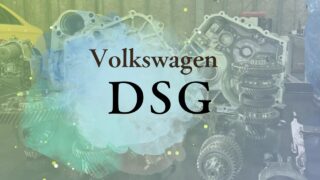

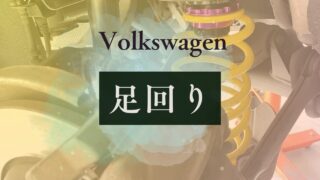
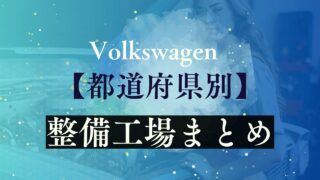
.jpg)

-1-120x68.jpg)
コメント